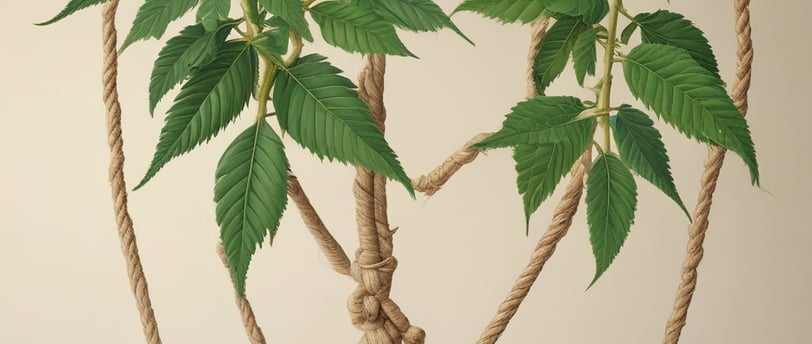From Rope to Revolution: The Secret History of Hemp
A look inside the origins and early use-cases of the magnificent Hemp plant
HEMPINSIGHTSHISTORY
In The Weeds
5/26/20202 min read


Picture this: Ancient Mesopotamians weaving hemp fibers into pottery over 10,000 years ago. Fast-forward to the U.S. Declaration of Independence being drafted on hemp paper. And today? You’re sipping CBD-infused cold brew while wearing a hoodie that’s more sustainable than 90% of your closet. Hemp isn’t just a plant—it’s the ultimate comeback kid of agriculture, industry, and culture.
**The OG of Agriculture**
Archaeologists have uncovered hemp’s presence in some of the world’s oldest human civilizations. In 8,000 BCE, it was already in use in Asia for rope, textiles, and medicine. In China, Emperor Shen Nung championed cannabis tea as a treatment for ailments as far-ranging as gout and memory loss. Ancient Indian texts mentioned “bhang,” a cannabis concoction still popular during Hindu festivals.
**Hemp Hits the High Seas**
By the 1200s, hemp was powering navies. Its fibers, known for durability, were ideal for sails and rigging. Columbus didn’t just sail the ocean blue—he did it wrapped in hemp. European empires relied heavily on hemp to expand their reach.
**Revolution in the Colonies**
In colonial America, hemp was more than a crop—it was a requirement. Literally. In the 1600s, laws in Virginia, Massachusetts, and Connecticut required farmers to grow hemp. George Washington and Thomas Jefferson cultivated it on their plantations. Benjamin Franklin ran a hemp paper mill. Hemp was part of the revolutionary spirit.
**The Industrial Age Gets a Green Boost**
During WWII, the U.S. launched a “Hemp for Victory” campaign, encouraging farmers to grow hemp for wartime needs—ropes, parachute webbing, and even uniforms. The campaign was a success. But after the war? The plant was ghosted.
**Enter: Corporate Greed and Reefer Madness**
In the 1930s, a mix of racism, industrial lobbying (we see you, DuPont and Hearst), and media-fueled hysteria led to the criminalization of cannabis—including low-THC hemp. The Marihuana Tax Act of 1937 effectively killed the industry. The plant that once clothed empires and held up ships was buried under fear-mongering and special interests.
**The 21st Century Glow-Up**
Cue the 2018 U.S. Farm Bill. Hemp was legalized again, unleashing a flood of innovation. Today, you’ll find hemp in sustainable apparel, cosmetics, protein powders, and even plastics. It’s not just sustainable—it’s regenerative. Hemp can clean soil, sequester carbon, and grow like a weed (pun intended) with little water and no pesticides.
**Did You Know?**
- The first Levi’s jeans were made from hemp.
- Henry Ford’s first Model T had hemp-plastic panels and ran on hemp ethanol.
- The word “canvas” comes from “cannabis.”
**Why It Matters Today**
As we stare down climate change, unsustainable supply chains, and a mental health crisis, hemp offers solutions. It’s a triple threat: eco-friendly, economically viable, and historically proven.
So next time you pull on that hemp hoodie or read about the latest hempcrete house, remember—you’re not just making a lifestyle choice. You’re participating in a revolution thousands of years in the making.
Hemp didn’t just survive history—it is history. And its best chapters are still being written.


